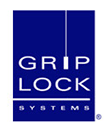Industry News
Lighting Revolution Around The Corner, National Lighting Bureau Panelists Reveal
February 05, 2016
Lighting is on the cusp of change so profound that nothing – not even the most vivid sci-fi imagination – has come close to depicting it. So say three lighting experts who, together, represent one of the world’s foremost lighting-research institutes, one of the world’s largest landlords, and one of the world’s largest lighting manufacturers. The three addressed the subject of circadian rhythms at the annual lighting colloquy sponsored by the National Lighting Bureau. Their discussion, moderated by EdisonReport Publisher Randy Reid, is now available for viewing on the National Lighting Bureau website.
“Imagine people wearing control devices on their wrists that would automatically adjust the color and intensity of ‘connected light’ to meet their physical, emotional, and even spiritual needs at any given moment. Imagine office workers, students, and others enjoying a post-lunch-hour ‘pick-me-up’ by stepping into a specially equipped room for a quick lumen shower.” So says National Lighting Bureau Chair James M. Yorgey, P.E., LC, CTS, Lutron Electronics Company’s technical-applications manager, who characterized the panel discussion as an “absolutely stunning look into the future of lighting.” Then he added, “What’s really amazing is that we are not talking about a future that’s 25 or even 10 years from now, as long as we have the will to make it happen and are willing to make the investment.”
The three panelists were Mariana G. Figueiro, Ph.D., professor and Light & Health Program director, Lighting Research Center, Rensselaer Polytechnic Institute; Kevin Kampschroer, director, Office of Federal High-Performance Green Buildings, U.S. General Services Administration; and Mary Beth Gotti, LC, manager, GE Lighting Institute, GE Lighting.
Dr. Figueiro explained that morning light synchronizes people to the local time on Earth. When synchronization is disrupted, circadian rhythm is disrupted. Research shows that circadian-rhythm disruption can have a negative effect on human health and well-being, and that long-term circadian-rhythm disruption has been associated with diabetes, obesity, and cancer. All light stimulates the human brain, she said, and can also exert an acute alerting effect on people. Blue light helps maintain synchronization and increase alertness, but saturated red light can also maintain alertness; e.g., red light after lunch or in the middle of the night helps people feel more alert and less sleepy. Historically, lighting has been thought of in terms of color and light level, she said. Now, timing has become important, too. As such, lighting controls will soon not only adjust lighting levels; they will also change lighting’s color at certain times or in response to certain stimuli.
Mr. Kampschroer commented that, historically, lighting systems were designed to do no harm to building occupants. Now, he said, we have lighting that can improve the well-being and performance of building occupants and enhance their ability to sleep at night. Insofar as lighting-energy conservation is concerned, he noted that, when people have the ability to adjust lighting on their own, they generally optimize their visual comfort by selecting settings that also happen to reduce energy consumption. He was particularly enthused about using more daylighting in buildings. He noted that, in hospitals, individuals who had undergone major surgery healed faster when their rooms were illuminated by daylighting. He commented that the value derived from shorter hospital stays would more than pay for the lighting systems required to achieve it.
Ms. Gotti said that the new roles lighting can fulfill give manufacturers significant opportunities and incentives to take lighting quality to a whole new dimension. She foresees opportunities not only in office buildings, but in educational and health-care facilities as well.
Obtain more information about the Bureau by visiting http://www.nlb.org or contacting its staff at [email protected] or 301-587-9572.









































